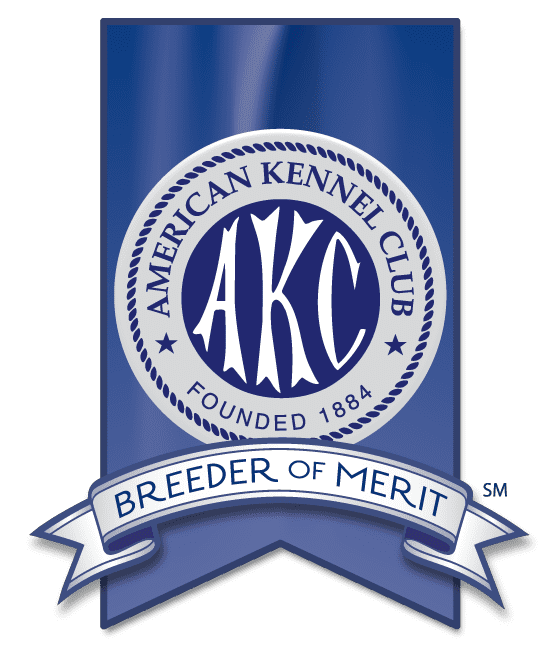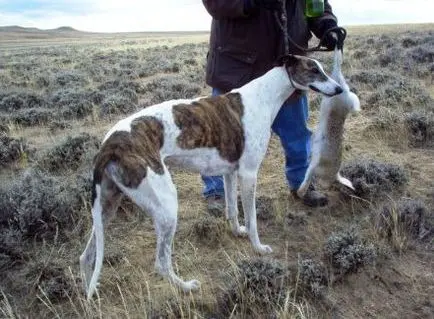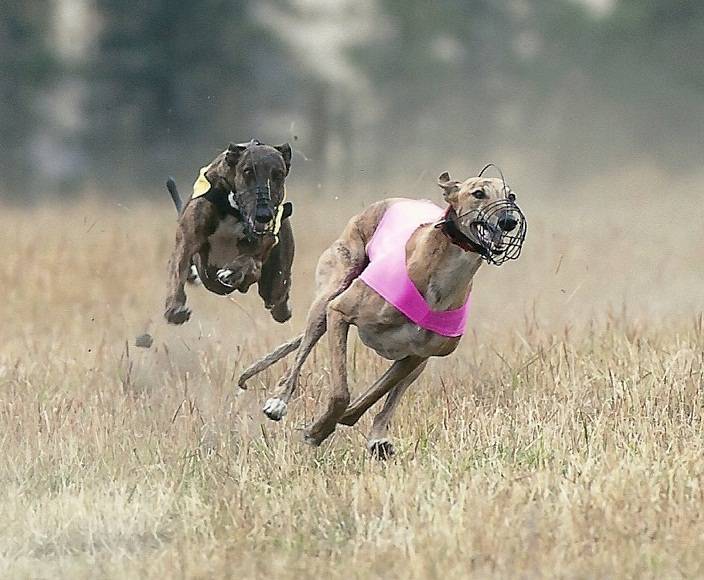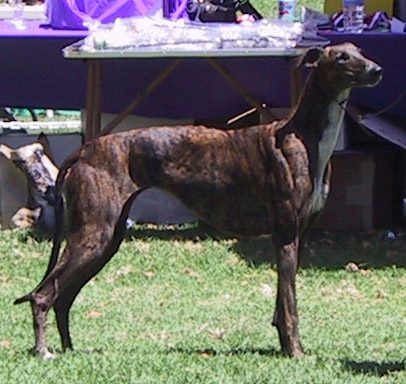
WINDROCK LLC
Recognized by the AKC as a
PLATINUM LEVEL BREEDERS OF MERIT
The ONLY Greyhound breeders so recognized by the AKC


An Introduction to the Greyhound
Slender legs reaching, stretching, consuming the ground, then, almost quicker than the eye could see, gathering and stretching again, the Greyhound streaked past, lost in the sheer joy of physical exertion. Faster and faster he went until his need was satisfied, then he slowed and explored his surroundings, ever alert for a foolhardy rabbit that may try its luck against his speed.
A Greyhound in full stride, muscles bulging under thin skin, his attention focused on a prey animal, is a creature of rare beauty. In sharp contrast to this insatiable drive to hunt and to run, a Greyhound in the home is a pet of uncommon sweetness and gentility.
Among the most ancient breeds, the Greyhound can be seen in Egyptian tomb carvings dated back to 2751 BC. These carvings depict the dogs attacking deer, a prey it was well-adapted to hunt.
Although the Greyhound also appears in various Celtic, British, Irish, and Scottish pictures and literature dating from the 9th Century, its slender build, deep chest, and thin skin suggest a warm climate origin for the breed.
The Greyhound developed as a sight hunter in the arid and semi-arid lands of North Africa and the Middle East, and the Arabs selectively bred him for increased speed. His hunting ability locked in his appeal to the aristocracy, for sport hunting was the province only of the upper classes.
Although the breed name "Greyhound" seems to be a reference to color, its origin is not so simple. Some attribute the name to a derivation of Graius or Grecian. Others trace it to the old British grech or greg, meaning dog and hundr, meaning hunting. Still others prefer the simpler explanation -- the original color of the dogs was gray and the name simply means gray dog.
No matter his color or the origin of his name, the Greyhound was definitely an aristocrat in whatever country he resided. Indeed, the English Parliament protected the status of the breed with a law in 1016 that prohibited ownership to "meane persons" and allowed only conditional ownership to "freemen." The value of a Greyhound exceeded that of a serf, and the punishment for causing death of a Greyhound was equivalent to the punishment for murder.
The Greyhound can hunt hoofed game and wild canids, but his specialty is rabbits. The English sport of coursing -- hunting by sight instead of scent -- has roots in ancient Greece, and is a sport valued for the contest more than the catching of the prey. The Greek historian Arrian wrote more than 1800 years ago: "For coursers, such at least as are true sportsmen, do not take their dogs out for the sake of catching a hare, but for the contest and sport of coursing, and are glad if the hare meets with an escape."
The sport of coursing led directly to the spectator sport of Greyhound racing with the invention of the mechanical rabbit in 1912. With the advent of racetracks and gambling on the outcome of the contests, Greyhound ownership passed from the aristocracy to the general populace, and, like other breeds with some lines bred for work and others for the show ring, the breed has diverged into conformation dogs and racing dogs.

Ch Windrock Go Go Gadget JC CC embodies the raw essence of the Greyhound. Greyhounds have been bred for centuries to hunt for Man. Looks like rabbit is on the menu tonight!
Participation in Sports
The Greyhound can hunt hoofed game and wild canids, but his specialty is rabbits. The English sport of coursing, hunting by sight instead of scent, has roots in ancient Greece and is a sport valued for the contest more than the catching of the prey.
The Greek historian Arrian wrote more than 1800 years ago: “For coursers, such at least as are true sportsmen, do not take their dogs out for the sake of catching a hare, but for the contest and sport of coursing, and are glad if the hare meets with an escape.”
The sport of coursing led directly to the spectator sport of Greyhound racing with the invention of the mechanical rabbit in 1912.
With the advent of racetracks and gambling on the outcome of the contests, Greyhound ownership passed from the aristocracy to the general populace, and, like other breeds with some lines bred for work and others for the show ring, the breed has diverged into conformation dogs and racing dogs.

Other Facts About Greyhounds

AKC Greyhound Breed Standard
Head
Long and narrow, fairly wide between the ears, scarcely perceptible stop, little or no development of nasal sinuses, good length of muzzle, which should be powerful without coarseness. Teeth very strong and even in front.
Ears
Small and fine in texture, thrown back and folded, except when excited, when they are semi-pricked.
Eyes
Dark, bright, and intelligent, indicating spirit.
Neck
Long, muscular, without throatiness, slightly arched, and widening gradually into the shoulder.
Shoulders
Placed as obliquely as possible, muscular without being loaded.
Forelegs
Perfectly straight, set well into the shoulders, neither turned in nor out, pasterns strong.
Chest
Deep and as wide as consistent with speed, fairly well-sprung ribs.
Back
Muscular and broad.
Loins
Good depth of muscle, well arched, well cut up in the flanks.
Hindquarters
Long, very muscular and powerful, wide and well-let down, well-bent stifles. Hocks well bent and rather close to the ground, wide but straight fore and aft.
Feet
Hard and close, rather more hare than cat feet, well-knuckled up with good strong claws.
Tail
Long, fine, and tapering with a slight upward curve.
Coat
Short, smooth, and firm in texture.
Color
Immaterial.
Weight
Dogs, 65 to 70 pounds; bitches 60 to 65 pounds.
Scale of Points
General symmetry and quality: 10
Head and neck: 20
Chest and shoulders: 20
Back: 10
Quarters: 20
Legs and feet: 20
Total: 100
Got Questions? Let’s Talk!
WINDROCK LLC in Torrington, Wyoming has been dedicated to breeding quality Greyhounds for decades. Feel free to get in touch with us for more information about our hounds.
